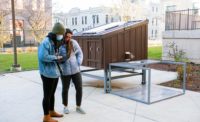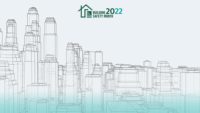As I sit writing this column, it has been almost exactly one year since the WHO declared COVID-19 a pandemic and states started implementing lockdowns and stay-at-home orders. Now, almost a year later, authorities in 219 countries and territories have reported about 112.2 million COVID-19 cases and 2.5 million deaths — more than 500,000 of them in the U.S. alone — since China reported its first cases to the WHO in December 2019.
Through all of this, there is still much unknown about the coronavirus. This includes how it first passed to humans (conspiracy theories aside), why it affects some people more than others, how it is spread (there’s still debate over whether it is spread through respiratory droplets when someone coughs or sneezes — which can be protected by masks — or if it is also spread by aerosols, which are much smaller particles that can remain suspended in the air for hours and travel long distances — which masks cannot protect against), how long someone is immune, and most importantly, when the pandemic will be over.
Regardless of the droplet or aerosol debate, we can agree that COVID-19 is most often spread through the air. As such, the CDC and ASHRAE have both included UV-C as a recommended mitigation step to slow the spread of the SARS-CoV-2 virus.
According to ASHRAE’s Position Document on Infectious Aerosols (2020), “The entire ultraviolet (UV) spectrum can kill or inactivate microorganisms, but UV-C energy (in the wavelengths from 200 to 280 nm) provides the most germicidal effect, with 265 nm being the optimum wavelength. The majority of modern UVGI lamps create UV-C energy at a nearoptimum 254 nm wavelength. UVGI inactivates microorganisms by damaging the structure of nucleic acids and proteins with the effectiveness dependent upon the UV dose and the susceptibility of the microorganism.” Additionally, an EPA study found UV-C devices installed in HVAC duct systems were 99% efficient at inactivating infectious pathogens on first pass.
UV Resources’ Dan Jones discusses the benefits of UV-C, the primary means of applying the technology and fixture placement further on in this issue of PM Engineer. Read more from him here.
Given the nature of this pandemic, the increased focus on health and hygiene is not going away any time soon — if ever. As engineers, it is imperative that you discuss indoor air quality options with your clients. Enlighten them on the different technologies and how they work, including proper ventilation, filtration, air purifiers, and yes, UV-C. These are important systems that play a role in the overall health and wellbeing of the building environment, especially as clean air has become more than just an amenity — it’s now a necessity. And it never hurts to boost your firm’s bottom line.




